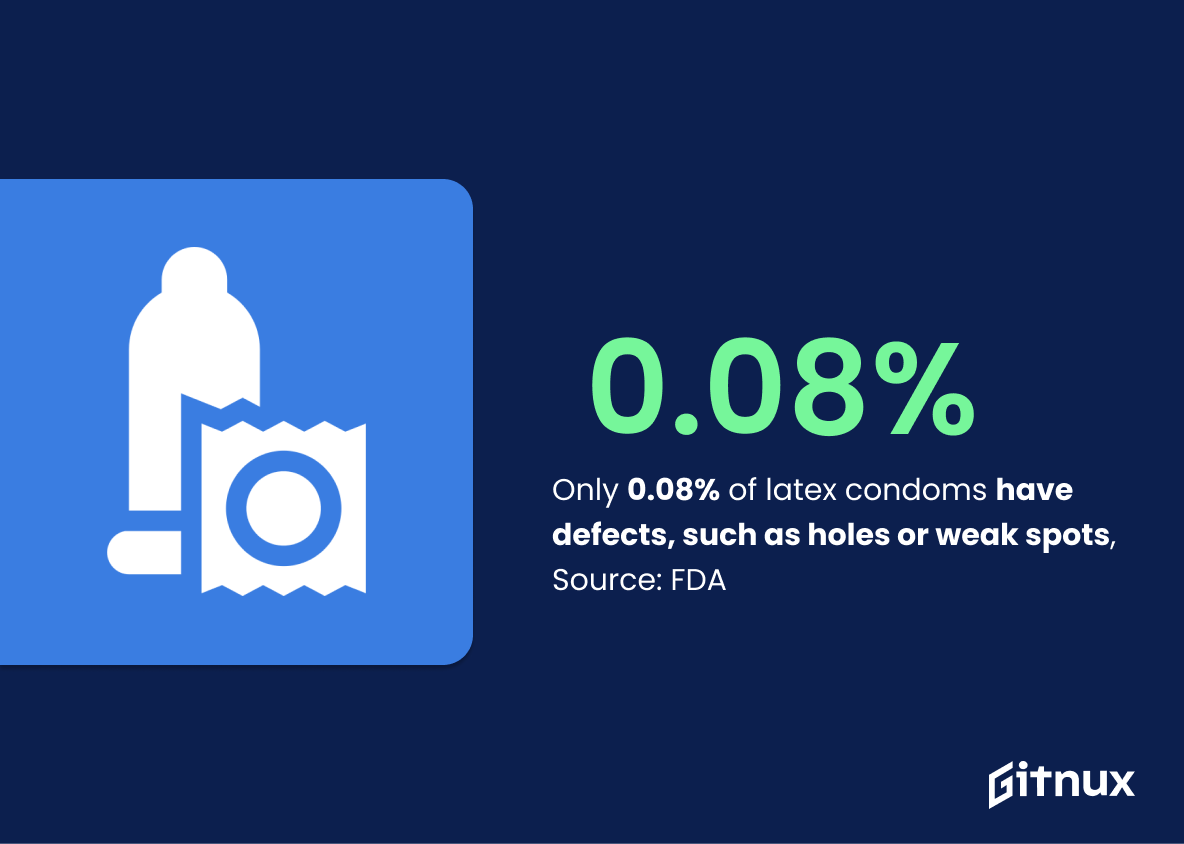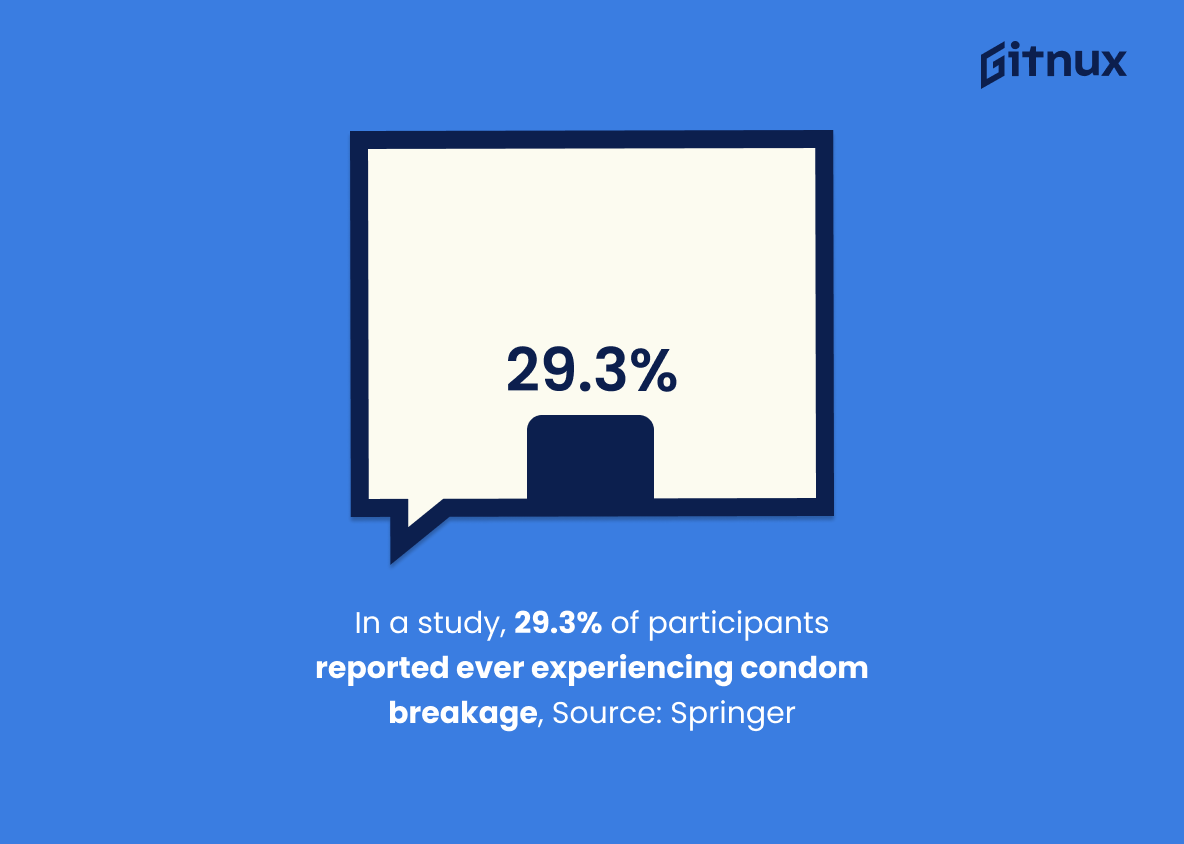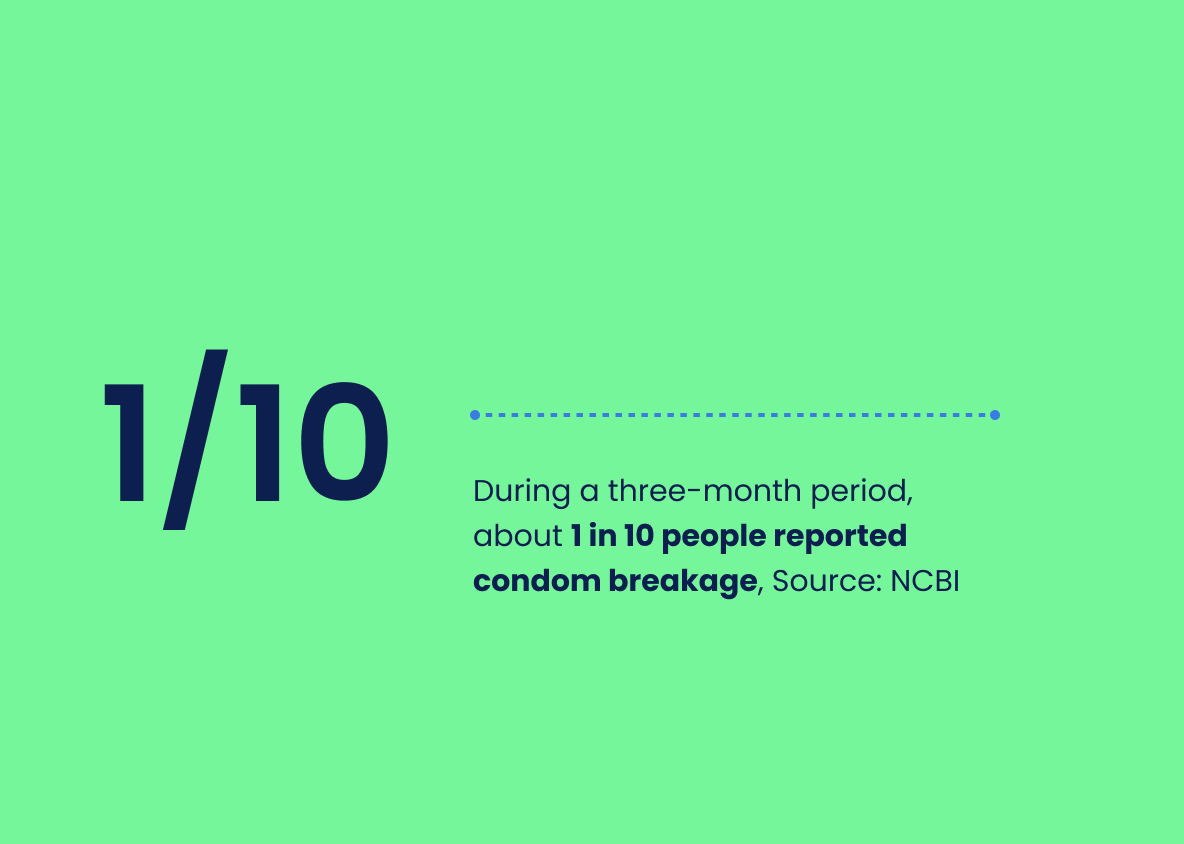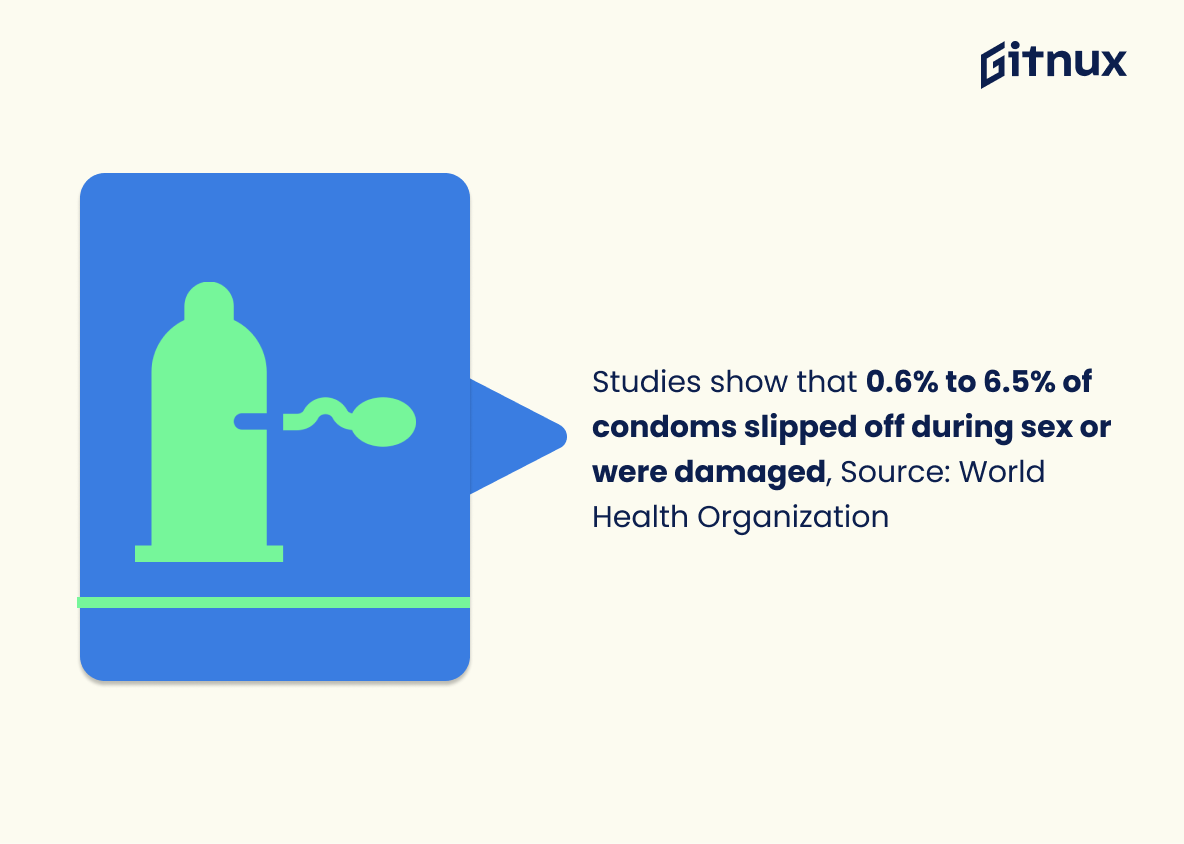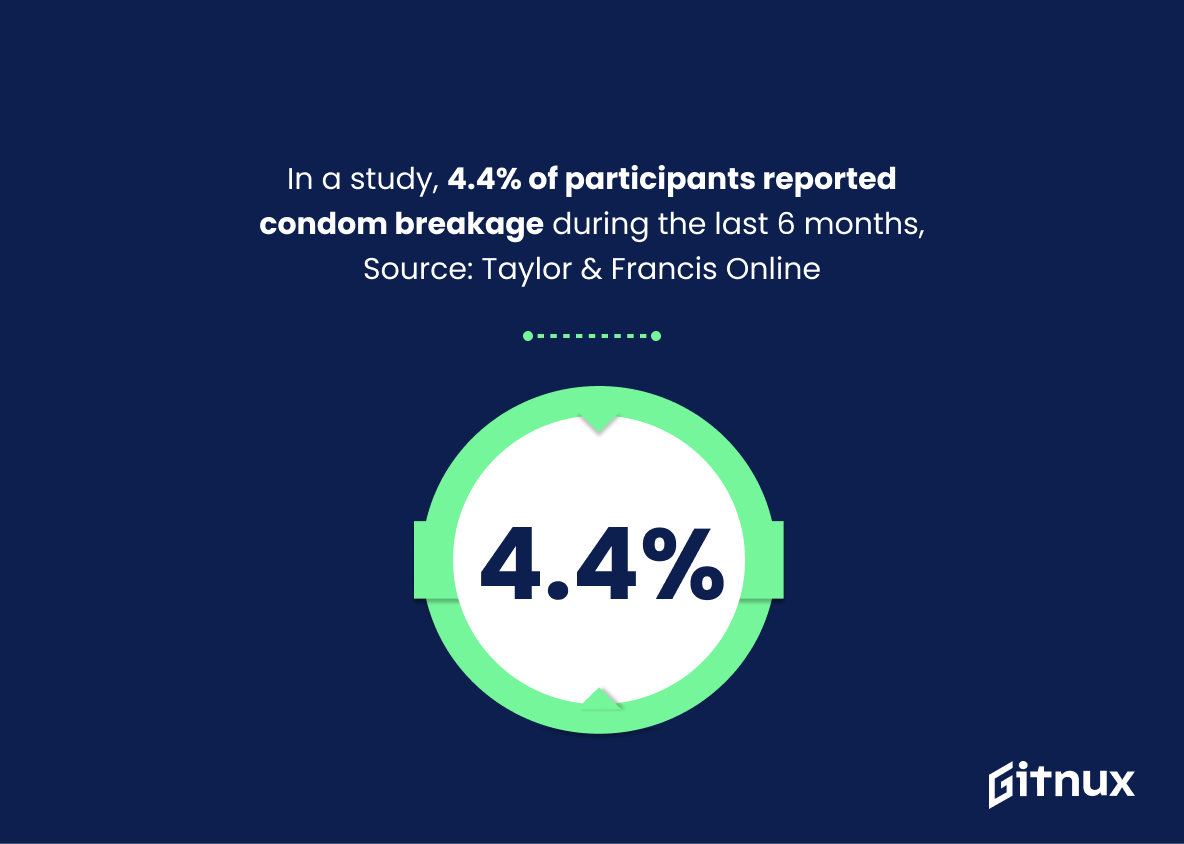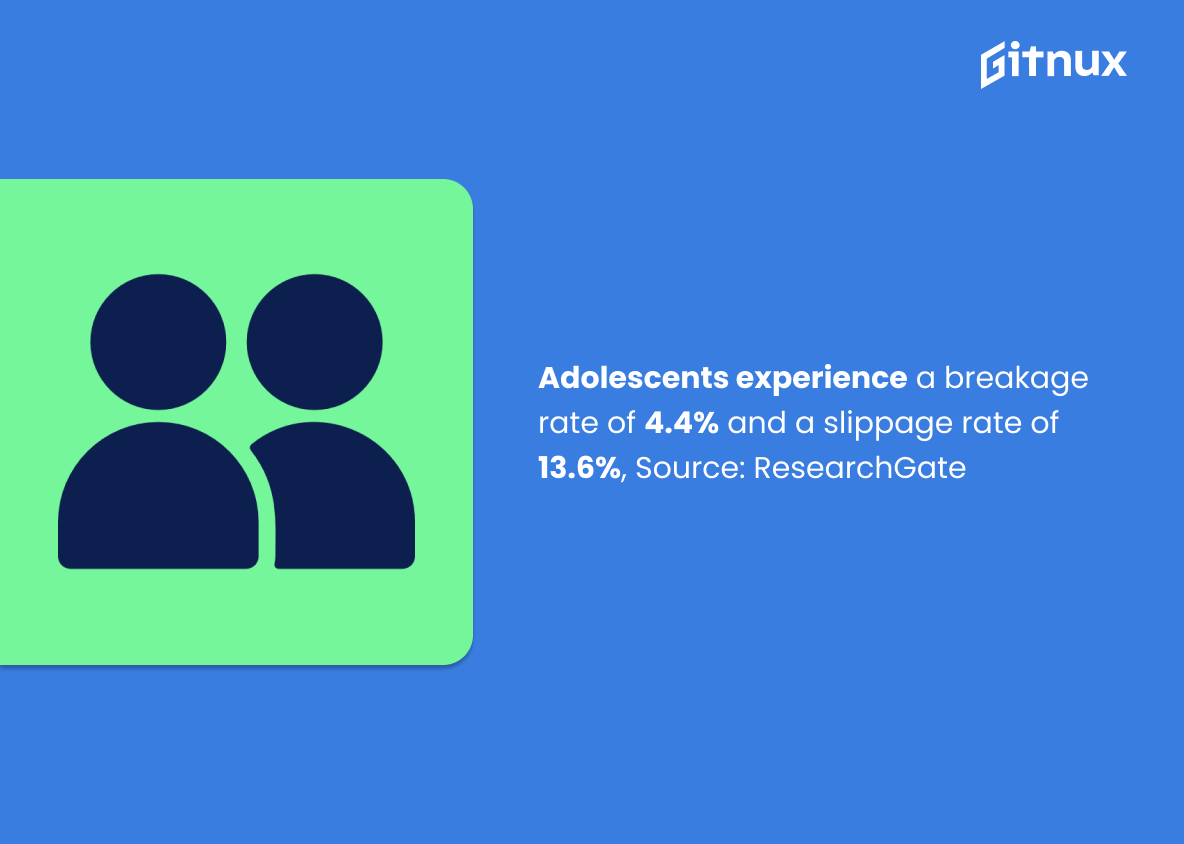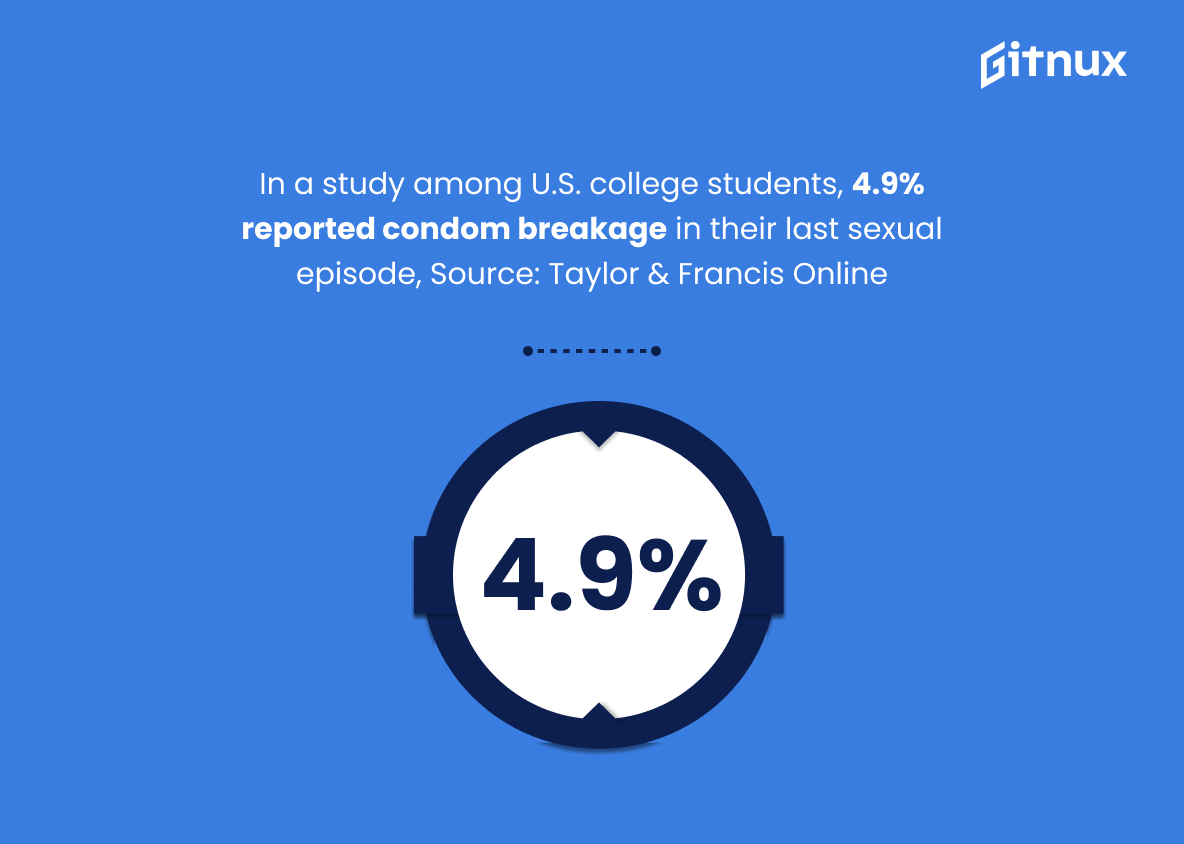Condom breakage is a serious issue that can have long-term consequences. It’s important to understand the statistics surrounding condom breakage in order to make informed decisions about contraception and sexual health. This blog post will explore How Often Do Condoms Break Statistics, including data from Planned Parenthood, Wiley Online Library, Contraception Journal, National Library of Medicine, FDA, SpringerLink, NCBI PubMed Central (PMC), JSTOR Journals Archive Collection Database (JACD), Taylor & Francis Online and Oxford Academic journals. We’ll look at the percentage of condoms that are reported to break during sex or due to defects such as holes or weak spots; how often people experience condom breakages; what factors may contribute to higher rates of failure; and more. By understanding these statistics we can better protect ourselves against unwanted pregnancies and sexually transmitted infections (STIs).
This statistic is an important indicator of the reliability of condoms as a form of contraception. It provides a tangible measure of the effectiveness of condoms in preventing unwanted pregnancies and the spread of sexually transmitted infections. Knowing the rate of condom breakage can help people make informed decisions about their sexual health and safety.
Condoms have a breakage rate of about 1.6% in clinical settings, Source: National Library of Medicine
This statistic is an important piece of information when discussing the reliability of condoms. It demonstrates that, even in clinical settings, condoms have a relatively low breakage rate of 1.6%. This provides reassurance that condoms are a reliable form of contraception and can be trusted to provide protection against unwanted pregnancies and the spread of STIs.
How Often Do Condoms Break Statistics Overview
Only 0.08% of latex condoms have defects, such as holes or weak spots, Source: FDA
This statistic is a testament to the reliability of latex condoms, showing that the vast majority of them are free of defects. This is an important point to consider when discussing the frequency of condoms breaking, as it suggests that the majority of condoms are of a high quality and unlikely to break.
In a study, 29.3% of participants reported ever experiencing condom breakage, Source: Springer
This statistic is a powerful indicator of the prevalence of condom breakage, showing that nearly a third of participants have experienced it. This is an important piece of information to consider when discussing the frequency of condom breakage, as it provides a tangible example of how common the issue is.
During a three-month period, about 1 in 10 people reported condom breakage, Source: NCBI
This statistic is a stark reminder of the importance of using condoms correctly and consistently. It highlights the fact that, even with proper use, condoms can still break, and that it is important to be aware of the risks associated with using them. This statistic is a valuable piece of information for anyone looking to learn more about the potential risks of using condoms.
Studies show that 0.6% to 6.5% of condoms slipped off during sex or were damaged, Source: World Health Organization
This statistic is a crucial piece of information when it comes to understanding the reliability of condoms. It provides a clear indication of the percentage of condoms that fail to provide the necessary protection during sexual intercourse, highlighting the importance of using condoms correctly and consistently.
In a study, 4.4% of participants reported condom breakage during the last 6 months, Source: Taylor & Francis Online
This statistic is a powerful reminder of the importance of using condoms correctly and consistently. It highlights the fact that even with proper use, condoms can still break, and that it is important to be aware of the risks associated with condom use. This statistic is especially relevant in the context of a blog post about How Often Do Condoms Break Statistics, as it provides a concrete example of the prevalence of condom breakage.
Adolescents experience a breakage rate of 4.4% and a slippage rate of 13.6%, Source: ResearchGate
This statistic is a crucial piece of information when it comes to understanding the prevalence of condom breakage and slippage among adolescents. It provides a clear indication of the risks associated with using condoms, and can help inform decisions about how to best protect oneself from unwanted pregnancy and STDs.
In a study, 7% of participants experienced condom breakage while engaging in anal sex, Source: ResearchGate
This statistic is a powerful reminder of the importance of using condoms during anal sex. It highlights the fact that even with the use of condoms, there is still a risk of breakage, and that it is important to take the necessary precautions to ensure safe sex. This statistic is a valuable addition to any blog post about condom breakage statistics, as it provides a concrete example of the potential risks associated with unprotected anal sex.
In a South African study, 38.8% of participants experienced at least one condom breakage in the previous 3 months, Source: Academia
This statistic is a stark reminder of the importance of using condoms correctly and consistently. It highlights the fact that, even with proper use, condoms can still break, and that this is a real issue that needs to be addressed.
In a survey, 17.3% of people reported a condom breakage within the last 5 events, Source: Cambridge University Press
This statistic from Cambridge University Press is a powerful indicator of the prevalence of condom breakage. It shows that nearly one in five people have experienced a condom breakage in the last five events, which is a significant number. This statistic is important to consider when discussing the topic of condom breakage, as it provides a tangible example of how often it can occur.
In a study among U.S. college students, 4.9% reported condom breakage in their last sexual episode, Source: Taylor & Francis Online
This statistic is a powerful reminder of the importance of using condoms correctly and consistently. It highlights the fact that even with the best intentions, condom breakage can still occur, and that it is important to be aware of the risks associated with unprotected sex. This statistic is a valuable addition to any discussion about the prevalence of condom breakage and the need for safe sex practices.
Conclusion
Based on the statistics provided, it is clear that condoms have a breakage rate of anywhere between 0.4% and 38.8%, depending on factors such as age, experience level, type of sex being engaged in (anal or vaginal), and other variables. It is important to note that correct use of condoms can significantly reduce the risk of condom breakage; however even with proper usage there may still be an occasional failure due to defects or weak spots in latex material used for manufacturing them. Therefore, it is essential to always practice safe sex by using multiple forms of protection when engaging in sexual activities.
References
0. – https://www.pubmed.ncbi.nlm.nih.gov
1. – https://www.academia.edu
2. – https://www.fda.gov
3. – https://www.researchgate.net
4. – https://www.cambridge.org
5. – https://www.plannedparenthood.org
6. – https://www.tandfonline.com
7. – https://www.apps.who.int
8. – https://www.ncbi.nlm.nih.gov
9. – https://www.link.springer.com
